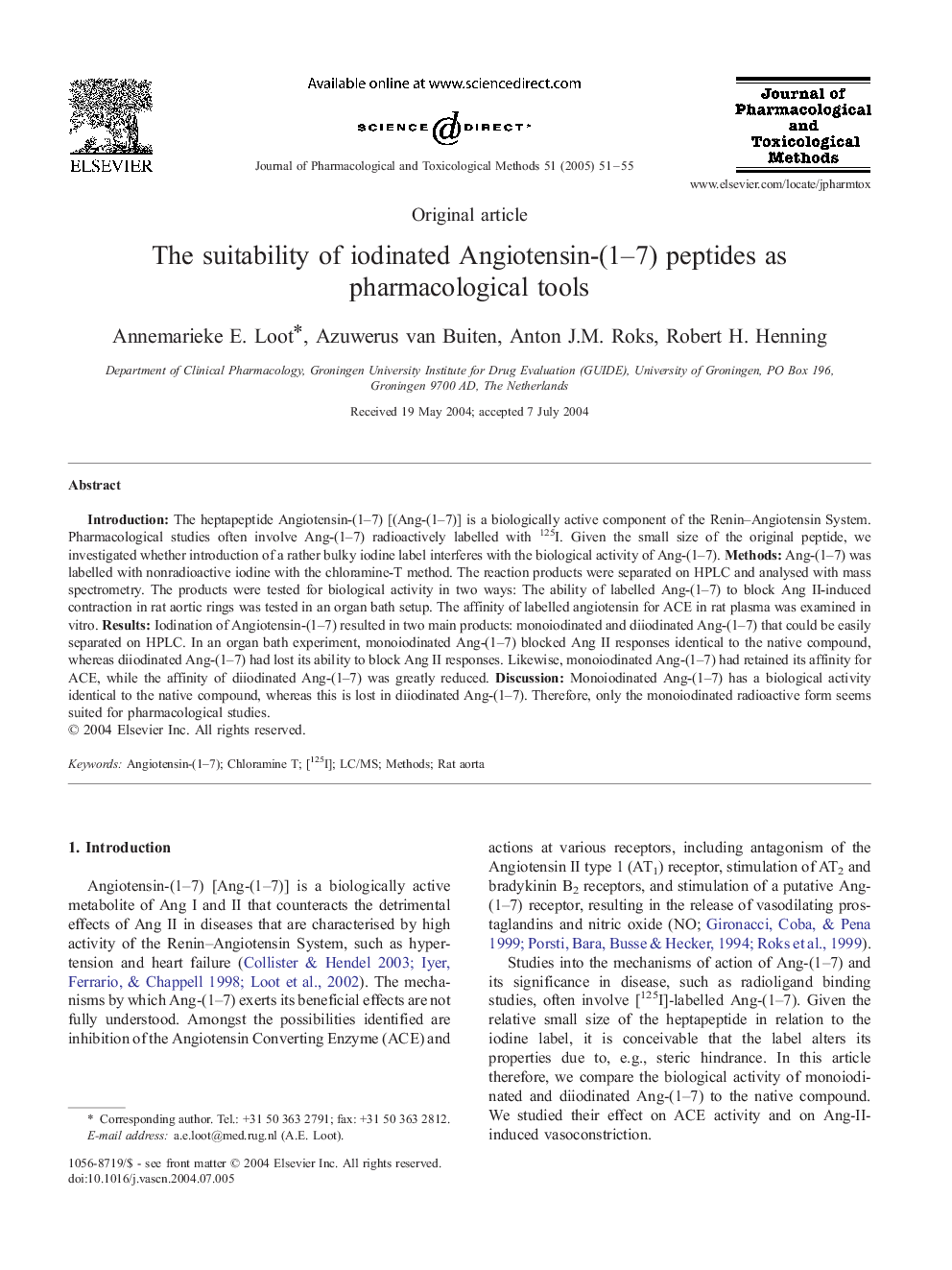| Article ID | Journal | Published Year | Pages | File Type |
|---|---|---|---|---|
| 9012302 | Journal of Pharmacological and Toxicological Methods | 2005 | 5 Pages |
Abstract
Introduction: The heptapeptide Angiotensin-(1-7) [(Ang-(1-7)] is a biologically active component of the Renin-Angiotensin System. Pharmacological studies often involve Ang-(1-7) radioactively labelled with 125I. Given the small size of the original peptide, we investigated whether introduction of a rather bulky iodine label interferes with the biological activity of Ang-(1-7). Methods: Ang-(1-7) was labelled with nonradioactive iodine with the chloramine-T method. The reaction products were separated on HPLC and analysed with mass spectrometry. The products were tested for biological activity in two ways: The ability of labelled Ang-(1-7) to block Ang II-induced contraction in rat aortic rings was tested in an organ bath setup. The affinity of labelled angiotensin for ACE in rat plasma was examined in vitro. Results: Iodination of Angiotensin-(1-7) resulted in two main products: monoiodinated and diiodinated Ang-(1-7) that could be easily separated on HPLC. In an organ bath experiment, monoiodinated Ang-(1-7) blocked Ang II responses identical to the native compound, whereas diiodinated Ang-(1-7) had lost its ability to block Ang II responses. Likewise, monoiodinated Ang-(1-7) had retained its affinity for ACE, while the affinity of diiodinated Ang-(1-7) was greatly reduced. Discussion: Monoiodinated Ang-(1-7) has a biological activity identical to the native compound, whereas this is lost in diiodinated Ang-(1-7). Therefore, only the monoiodinated radioactive form seems suited for pharmacological studies.
Related Topics
Health Sciences
Pharmacology, Toxicology and Pharmaceutical Science
Pharmacology
Authors
Annemarieke E. Loot, Azuwerus van Buiten, Anton J.M. Roks, Robert H. Henning,
